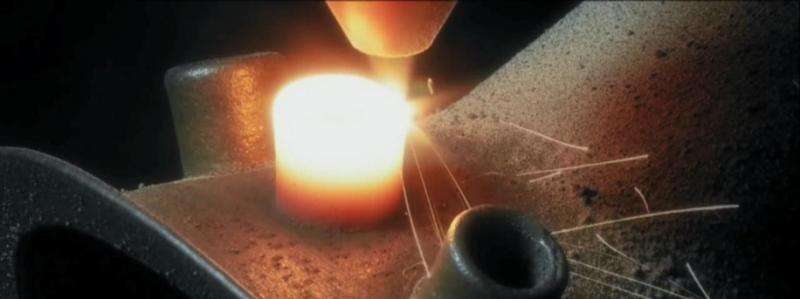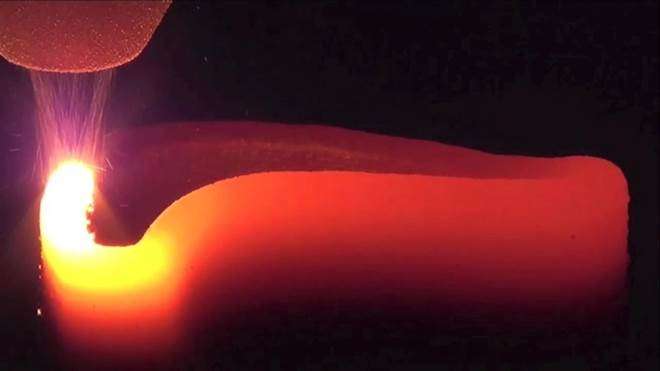A digital world you can touch

New additive manufacturing technologies are making it possible to produce burner components and turbine blades in a 3D printer. When it comes to developing and implementing additive manufacturing, Siemens is ahead of the competition. The company plans to aggressively promote associated technologies.
In additive manufacturing, also known as 3D printing, components are built up layer by layer – in other words as an additive process – on the basis of three-dimensional design data. It works with plastics, metals and other materials. Additive Manufacturing enables complex objects and geometries to be implemented seamlessly, something that is not possible with conventional industrial production. In particular additive manufacturing makes it possible to manufacture three dimensional objects characterized by complex internal structures, such as, for example, a spiral shell shape or – in an industrial context – a turbine blade with irregular inner cavities for cooling. Using conventional technology, on the other hand, it is necessary to mill two parts and then weld them together.
Additive manufacturing, in contrast, allows a complex shape to grow in one seamless piece. Analysts are speaking of a revolution in manufacturing, and predicting that the global market for additive manufacturing will be worth around eight billion Euros by 2022 – that is for material, machines, software and services. This offers enormous opportunities for Siemens. "With additive manufacturing, we can link the real world, which Siemens will continue to strongly shape with its hardware, with the virtual world of digitalization," explains Professor Siegfried Russwurm, Chief Technology Officer at Siemens.
Better Components, Developed Faster

Siemens will do this by combining its customer and data expertise with this innovative manufacturing technology. Compared with its competitors, Siemens is comparatively far advanced with the application and development of additive manufacturing. Several Divisions already use the technology to optimize their own products and to enable them to offer better products.
Operators of gas turbines, for example, can expect enormous increases in performance because a new component design allows more efficient combustion or cooling and because of the use of more cost-efficient injection nozzles. The same applies to electric motors. New geometries and different materials can increase power density by as much as 50 percent.
The development process will also be faster. Production time for prototypes of rotor blades and guide vanes for gas turbines can be reduced by around 75 percent, while associated repair times for gas turbine burners can be reduced by 90 percent. The service business also benefits because spare parts not only can be manufactured more quickly, but they can be individualized to a greater extent. And even subsequent optimizations are possible.
"We already hold a leading position in additive manufacturing today," states Russwurm. "But our aim is to speed up the pace enormously." Corporate Technology (CT) coordinates the many centers of expertise that have grown up within the Divisions in the Siemens-wide initiative for the industrialization of additive manufacturing.
Knowhow and Expertise
CT is contributing its expertise primarily to the development of materials and the simulation of the production process. That is no easy task. Currently, laser melting is the most important method used by Siemens in the area of additive manufacturing. In this process, a laser melts a metal powder that then grows layer by layer into the desired component. In milliseconds temperature differences of 1,000 degrees Centigrade occur within the space of a few micrometers.
Another area where CT assists as partner for Siemens' Business Units is in the further training of the Siemens development and production community. Employees need totally new types of expertise in order to develop designs and applications with additive manufacturing. That's why CT has developed special training courses with Siemens Professional Education, the Learning Campus and with top universities in Germany.
Provided by Siemens



















